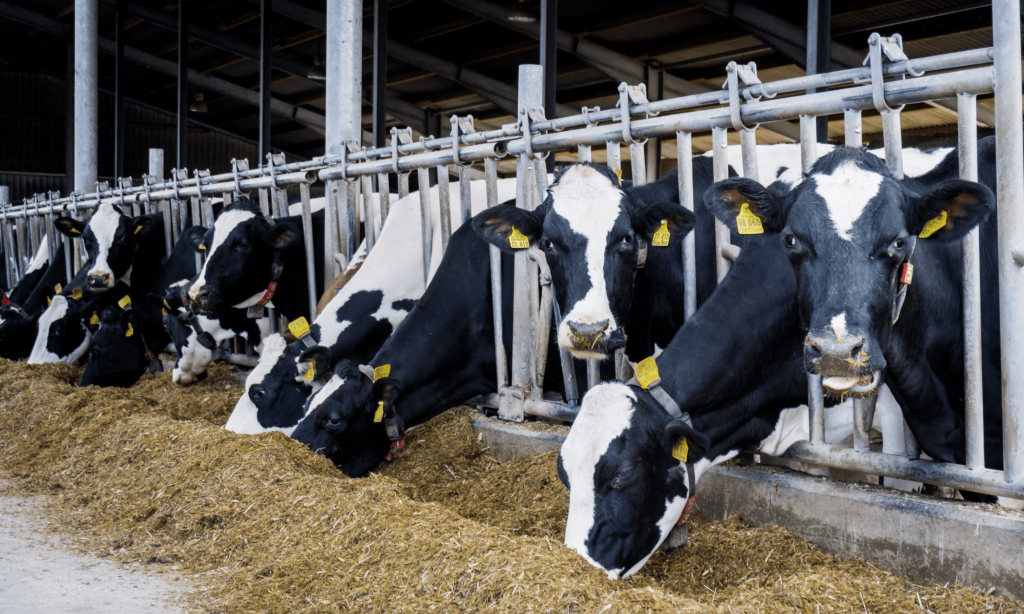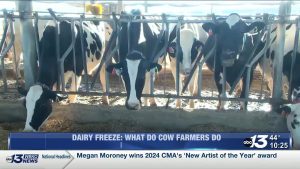The Indian dairy industry has benefited greatly in recent years from technologically driven products, services, and solutions. Innovative technologies are assisting the dairy industry in running their businesses more efficiently.
Significant technological advancements have occurred in the Indian dairy industry in recent years. Aside from technological advancements to improve farming methods and the organisational supply chain, big data is another area in which Indian businesses are investing. It is critical for the dairy industry to stay on top of trends and connect to the changing consumer wants and needs.
The dairy industry in India is largely unorganised, resulting in inconsistent milk quality and composition. Due to a lack of technology in this sector, many small farmers have high wastage and inconsistent quality and quantity of milk because they lack granular, actionable data to improve their operations.
The ICT industry is playing an important role in transforming India’s largely unorganized dairy sector by developing automated tools that use the Internet of Things (IoT) and advanced analytics to improve milk production and quality for the country’s small dairy farmers.
The dairy industry’s IoT offerings span the entire value chain, from milk production to payment. The supply chain in the Indian dairy industry is quite complex due to its reliance on a variety of factors such as storage temperature, cold chain availability, weather, perishability/shelf life, first and last-mile distance, packaging, and so on. The fact that the Indian dairy industry is unorganized and fragmented exacerbates supply chain issues.
However, there are a number of technological innovations taking place in India’s dairy supply chain. Cold chain technology is expected to advance rapidly in the supply chain. A growing number of dairy manufacturers, suppliers, and other stakeholders are utilizing blockchain technology to provide customers with real-time data about their products.
This is accomplished by including a QR code on the packaging that customers can scan with their mobile devices to obtain information about the origin of the milk, how and where it was collected and packed, how old it is, what type of transportation and cold milk chain facilities were used, and so on.
For example, the Kerala Government in India is utilising blockchain technology to streamline the purchase and distribution of milk, fish, and vegetables throughout the state. A dairy farm must ensure that all its operations run smoothly, from accounting, finance, and labour management to livestock and supply chain management.
Farmers can use a wearable sensor to track a cow’s health and yield and measure important parameters like milk quantity. Farmers can use this data to get immediate feedback, which they can then compare to their peers to improve productivity and income. Cows have traditionally been milked manually. This is not only a time-consuming activity, but it also has an operating cost, which raises the price of milk.
Robotic milking machines help dairy farmers to eliminate the need for physical labour, maintain a sanitary milking process, milk cows at any time of the day rather than on a set schedule, and increase milk production.
The robotic milking machines have arms or cups with sensors that can be attached to cows’ teats individually. The sensors can detect whether the cow or one of its teats is ready for milking. Once the milking process begins, the machines can detect impurities, color, and milk quality. If the milk cannot be consumed by humans, it is diverted to a separate container. When the task is completed, the machines can also clean and sanitize the teats automatically.
Cattle feed requirements are determined by the health of the animals as well as the weather. A sick or pregnant cow, for example, might require extra nutrients. When the weather is hot and humid, cattle require more glucose in their feed.
A variety of feed technologies create tailored feed additives, supplements, premixes, and base mixes to ensure maximum milk production throughout the year. For example, the National Dairy Development Board (NDDB), has developed bypass protein technology to provide specifically processed protein supplements that the cattle can consume to increase milk yield and quality.
There are digital feed monitoring solutions that can help farmers detect feed quality, manage feed inventories, and determine their cattle’s feeding patterns. Farmers can, in fact, use a feed monitoring tool to create a personalized diet for each cow based on their body weight, milk quality, and output, improving fertility and productivity.
Larger dairy organizations are also increasingly reliant on technology. Amul, the world’s largest dairy federation based in Gujarat, implemented advanced automation to reduce milk waste and support its rapid growth.
The organisation’s new control and automation systems ensured the continuous processing of more than a billion litres of milk. Amul’s increasing output provided an opportunity for the cooperative’s three million milk producers to increase their own output and meet rising dairy product demand.
Amul Dairy is the first cooperative in India to use a digital tracking and monitoring system for artificial insemination processes. The technology sends quick and timely alerts to cattle owners and the cooperative via mobile phone regarding artificial insemination (AI), of the animal. The member milk producer must call the Amul call centre to register his animal for AI. A milk society-appointed artificial insemination technician and the milk producer receive a message, and the chain of events begins. The technician visits the animal, and once the artificial insemination is finished, all the information is updated on the mobile, which sends a message to the Amul call centre and the milk producer.
The digital system notifies the animal of its pregnancy diagnosis, and after nine months, the information about the calving, i.e., the calf’s sex, is registered in the mobile application along with its date of birth. The system also keeps track of the newborns’ deworming and vaccination schedules. Transparent information, as well as its analysis can be used to make accurate decisions and help the animal husbandry industry thrive because of digitalisation.
Consumer preference for a healthy lifestyle has shifted the dairy industry’s fortunes. As a result, players in the dairy foods market have been forced to innovate in their offerings significantly. One of the primary goals of the dairy industry is to provide people with sustainable nutrition (healthy food), that is produced in an environment-friendly manner.
Moreover, there is rising consumer demand for transparency in the dairy industry. Using technological platforms like sensors, data analytics, and digital technology at unprecedented levels enables dairy companies to make better decisions. Companies are coming up with new and innovative ways to attract customers.
Significant technological advancements have occurred in the Indian dairy industry in recent years. As the world’s biggest milk producer, India is an important player in the dairy industry, with high growth potential. Despite continued industry challenges, there is an increasing appetite and demand for dairy products. Farm management software has aided in the automation and digitisation of end-to-end production and operations activities. Providing a comprehensive view of all farm activities, managing records, generating reports, and detecting inefficiencies make a lot of sense for industry start-ups to form strategic alliances with large players to create more value for small farmers.
Such collaborations go beyond equity investments to provide deeper domain expertise, flexibility, and access to real-time operational technologies. Through such agreements, start-ups will gain access to cutting-edge technologies from larger partners, such as artificial intelligence-powered operations management solutions, allowing them to scale more quickly. Partnerships between start-ups and established companies are critical for accelerating innovation in this sector. By providing better data and faster paths to profitability to India’s milk producers, the country will be able to maintain its position as the world’s largest dairy producer.

















